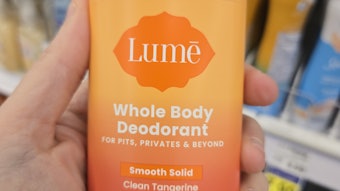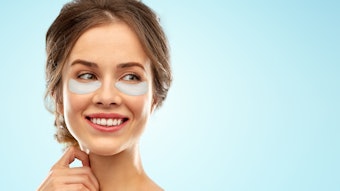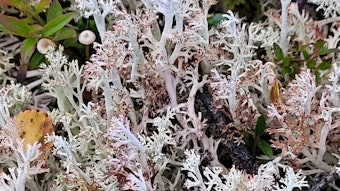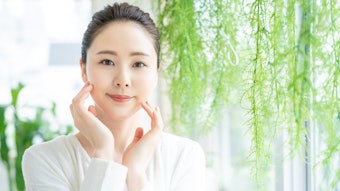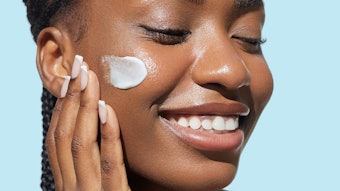Antioxidants are nothing new to skin care, they have been used in personal care products for decades, mainly in the form of vitamins A, C and E. In the past few years, however, innovation has let to a new generation, or “Generation Z,” of antioxidants. Here, Julie K. Salmon, MD, a dermatologist at Southwest Skin Specialists, discusses innovative antioxidants that are particularly beneficial in skin care.
Ergothioneine as a Scavenger
“Antioxidants serve as just another line of defense for skin; they can reduce photodamage,” said Salmon, who noted a high level of antioxidant power in ergothioneine. According to the Merriam-Webster Dictionary, ergothioneine is a crystalline betaine C9H15N3O2S that is found especially in ergot and blood; it is also called thioneine.1
According to a study published in the Journal of Cosmetic Dermatology, L-ergothioneine is a stable antioxidant found in food plants, as well as in animal tissue under relatively high levels of oxidative stress. In a comparison of L-ergothioneine with idebenone, researchers found L-ergothioneine to be more efficient in inhibiting lipid peroxide formation than coenzyme Q10 or idebenone. They reported the L-ergothioneine directly scavenges free radicals and protects cells from UV-induced ROS.2
Salmon also has found ergothioneine to act as a powerful antioxidant, especially when tested via the Oxygen Radical Absorbance Capacity (ORAC) method. “On the ORAC testing, it scored in the order of 60,000; the coffee berry came in at 16,000,” reported Salmon, who noted this is a high level of antioxidant ability.
Keratinocytes have receptors for ergothioneine and can internalize it, said Salmon, adding, “The receptor is the door to get into the cell; therefore, it is believed that ergothioneine can be utilized within the cell.” While many antioxidants are working around the extracellular matrix, ergothioneine can penetrate it.
Ergothioneine is beneficial not only in skin care, but also in sun care. Salmon reported that skin pretreated with ergothioneine does not burn as readily as untreated skin. “Ergothioneine sops up free radicals and quenches the chemicals in the skin. It donates electrons to molecules that need them,” said Salmon.
Which raw materials, then, could provide formulators with a source for this antioxidant? Interestingly, food scientists at Penn State identified white button mushrooms as carrying higher levels of ergothioneine than wheat germ or chicken liver.3
Niacin for Repair, Lightening
While vitamins A, C and E have been highly touted, vitamin B, specifically nicotinamide, is now receiving its share of attention from the dermatology community. Nicotinamide, also called niacinamide or nicotinic acid amide, is an amide of vitamin B3 or nicotinic acid. “In the past few years, we have realized how important vitamin B is for the skin,” said Salmon. “Niacinamide works by increasing cell energy so it can better repair DNA.”
In addition DNA repair, skin lightening is the among other benefits that niacinamide can provide. In a study by the University of Cincinnati and Procter and Gamble, researchers reported a dose-dependent inhibition of melanosome transfer from melanocytes to keratinocytes with the application of niacinamide.4 “Niacinamide enhances the epidermal turnover, thickens the epidermis, and reduces collagen glycation,” said Salmon. The future of niacinamide, according to Salmon, will include increased dosages, especially since the material exhibits anti-cancer properties.
Salmon notes that product lines such as NIA 24 from NiaDyne, Inc., formulate with niacinamide and are claimed to enhance DNA repair and epidermal cell turnover as well as create a more even pigment distribution.
Antioxidants and Synergism
Salmon adds that a combination of antioxidants is perhaps the best way to fully address skin issues. She references CE Ferulic, a serum formulated by SkinCeuticals, a L’Oréal brand. The synergistic effect of L-ascorbic acid (15%), alpha tocopherol (1%) and ferulic acid is especially beneficial in skin care, according to Salmon.
“When you combine different antioxidants, they synergize. Vitamin C helps to quench free radicals in the water component of the body, while vitamin E quenches free radicals in the fat part of the body,” said Salmon.
In the end, Salmon likens antioxidant treatments for the skin to nutrition for the body. “You wouldn’t just eat broccoli, you eat a variety of vegetables because they work better together than alone.”
References
1. Merriam-Webster Online, www.merriam-webster.com/medical/ergothioneine (Accessed Jun 16, 2009)
2. KK Dong, N Damaghi, J Kibitel, MT Canning, KA Smiles and DB Yarosh, A comparison of the relative antioxidant potency of L-ergothioneine and idebenone, J Cosm Derm 6(3) 183–188 (2007)
3. http://live.psu.edu/story/13294 (Accessed Jun 16, 2009)
4. A Greatens, RE Boissy and DL Bissett, Niacinamide: Dose response and reversibility of inhibition of melanosome transfer, The Procter & Gamble Company, American Academy of Dermatology proceedings (2003)


